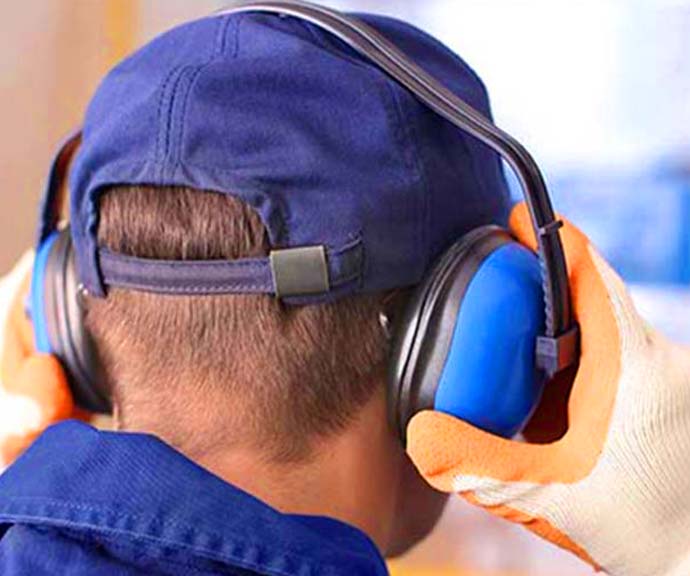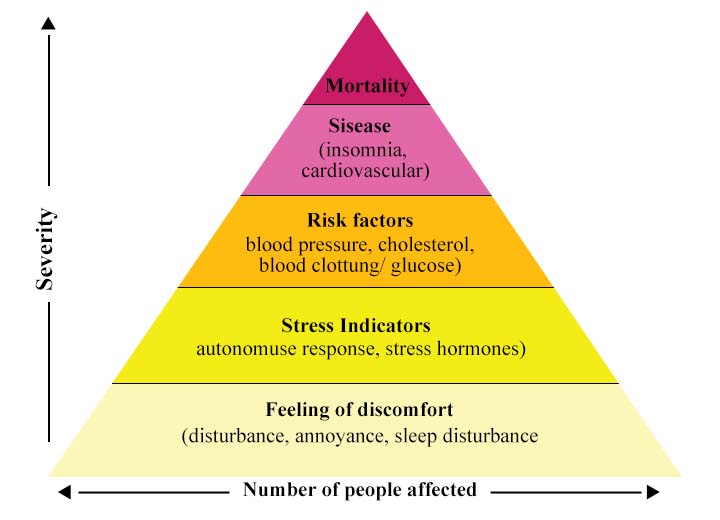HSE-Compliant Occupational Noise Monitoring
Noise pollution has been recognized as a leading cause of psychological and physiological disorders globally, making it imperative for employers to evaluate the potential health and safety hazards associated with workplace noise exposure. Despite the use of Hearing Protection Devices (HPDs), Noise Induced Hearing Loss (NIHL) remains a prevalent occupational condition.
A workplace noise survey conducted by a qualified occupational hygiene consultant can help employers assess and understand the noise exposure levels in their workplace. The survey results can provide valuable insights into the risk of hearing loss and tinnitus among employees, allowing employers to make informed decisions on how to improve their compliance with HSE regulations and promote employee health and safety. A continuous noise exposure of 85-90 dBA can lead to gradual hearing loss and changes in basic sensitivities. It is therefore important for employers to regularly monitor workplace noise levels to ensure they remain within safe levels and maintain a healthy and safe work environment for their employees.
Table 1: Some noise levels commonly observed in the daily life
| Noise Level(dBA) | Activity |
|---|---|
| 0 | Threshold of hearing |
| 38 | Library |
| 40 | Living room |
| 58 | Conversational Speech |
| 66 | Business office |
| 80 | Average street traffic |
| 100 | Pheumatic chipper |
| 125 | Fire Crackers |
| 140 | Jet take off(25 m)and thrshold of pain |
Who needs Occupational Noise Monitoring?
- Are you concerned about excessive noise levels in the workplace?
- Do your employees regularly use loud equipment or machinery, such as hammering tools or pneumatic impact tools, for extended periods of time each day?
- Is your work environment in a sector such as construction, woodworking, or fabrication, where noise levels can be particularly high?
- Do employees struggle to communicate comfortably from just a few meters away without raising their voices?
If any of these issues sound familiar, it’s important to assess your employees’ exposure to noise and compare it against industry standards. Green World Group can assist with this by conducting a comprehensive workplace noise survey. Ensure a safe and healthy work environment for your employees – reach out to us today.
Why is Occupational Noise Monitoring so important to workers?
Noise interference in communication can be a major safety hazard, making it challenging to hear critical warnings. Prolonged exposure to loud noises at work can result in noise-induced hearing loss and tinnitus, a permanent ringing in the ears. According to the UK’s statistics, 6 million individuals are impacted by tinnitus, representing 10% of the total population.
The physical and mental well-being of workers are negatively impacted by noise exposure in the workplace. Over time, the worker may become insensitive to potential hazards in both industrial and residential settings, leading to disturbed sleep and other stress-related symptoms.
Green World Group, a team of experienced and qualified expert consultants, offers occupational noise exposure monitoring to ensure your workplace complies with the Control of Noise at Work Regulations 2005 and the Occupational Safety and Health Administration (OSHA) permissible exposure limit. Our experts will assess the level of noise in your workplace and provide an action plan to reduce the exposure.
As per OSHA standards, if the daily or weekly average noise exposure reaches 85 decibels, employers must provide hearing protection and designate hearing protection zones. At 80 decibels, employers must evaluate the potential harm to employees’ health and provide them with information and training. Trust the experts at Green World Group to keep your workplace safe and compliant.
The World Health Organization presents the adverse health effects of noise through a pyramid illustration.
What are the benefits of Workplace Noise Surveys to employees?
It is crucial for employers to comply with The Control of Noise at Work Regulations 2005 in order to meet health and safety standards and avoid penalties and legal action. The first step in controlling noise in the workplace is to identify the source of the noise and determine the best approach to reducing it. Employers can seek guidance from experts in the field to ensure they have the right strategies in place to control and reduce noise levels.
When it comes to protecting the hearing of workers, it is important to determine which situations and tasks require the use of hearing protection. The appropriate type of hearing protection should be selected based on the noise level and duration of exposure. Making noise levels in the workplace lower not only improves communication but also makes it easier for employees to hear alarms, ensuring a safer work environment.
In order to prevent hearing loss and tinnitus, employers must prioritize the health and safety of their workers by implementing effective noise control measures. Regular monitoring and assessments of noise levels should be carried out to ensure compliance with regulations and to identify any potential risks to employee health and safety. By taking a proactive approach to controlling noise in the workplace, employers can promote a safe and healthy work environment for their employees.
How does Green World conduct an HSE-Compliant Noise Survey?
Our Occupational Hygiene Consultant will visit your site to conduct a comprehensive workplace noise survey. The survey involves collecting noise exposure data using both personal dosemeters worn by employees and handheld sound level meters. Our consultant will also observe work practices and gather additional information to help us better understand your noise exposure levels.
Once the data has been analysed, Green World provides a comprehensive report detailing your current level of compliance with HSE regulations. Based on the results, our experts will provide tailored recommendations on how to effectively control noise in the workplace and offer guidance on selecting the appropriate hearing protection. Ongoing monitoring of noise levels is also recommended to ensure continued compliance with HSE regulations and maintain a safe and healthy work environment.
CAN’T FIND WHAT YOU ARE LOOKING!
Get Your Query Answered / Get Counselor Assistance To Choose the Right Course for You Or Your Associates





